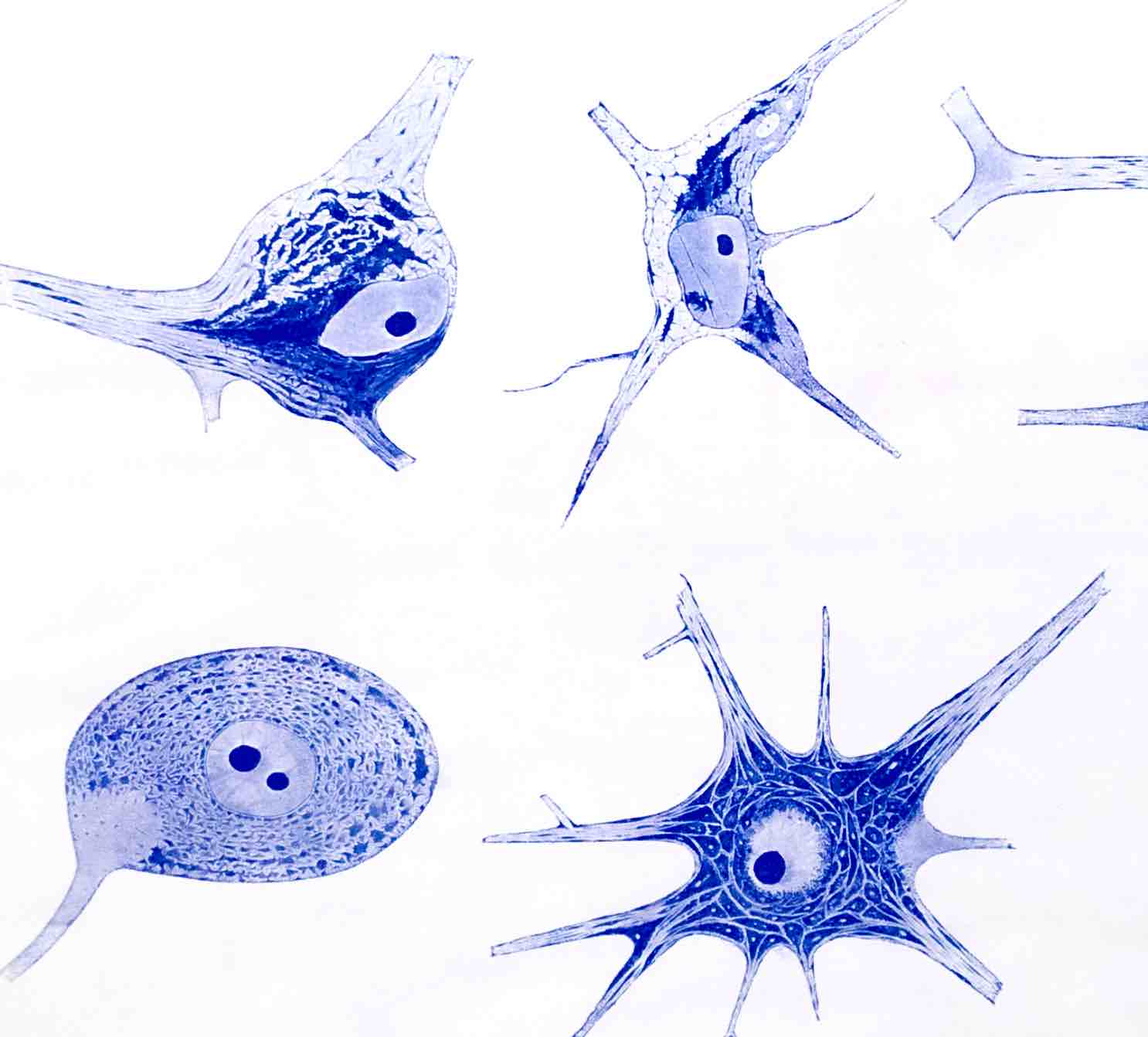Nerve
cells
 The
great variety of neuronal morphology demonstrates that in reality
there is no prototypical nerve cell. Considering all the different
shapes and sizes of motor neurons, sensory or autonomic ganglion
cells, Purkinje cells, granule cells, cortical interneurons or
pyramidal cells, it is astonishing that they are all built for the
same purpose: to receive, process and transmit information by means
of bioelectrical signals.
The
great variety of neuronal morphology demonstrates that in reality
there is no prototypical nerve cell. Considering all the different
shapes and sizes of motor neurons, sensory or autonomic ganglion
cells, Purkinje cells, granule cells, cortical interneurons or
pyramidal cells, it is astonishing that they are all built for the
same purpose: to receive, process and transmit information by means
of bioelectrical signals.
Neurons
share all the features of basic metabolism, cytoarchitecture,
organelles and functional cell biology with other somatic cells. The
usually spherical nucleus shows relatively little heterochromatin and
contains one or even two nucleoli. There are mitochondria, lysosomes,
Golgi complexes and a rough endoplasmic reticulum (RER) organized in
Nissl bodies. Neurons possess an especially elaborate cytoskeleton
with microtubules, intermediate filaments and microfilaments used as
scaffolds or motors to manage the enormous task of cytoplasmic
transport in the axons and the dendrites. This reflects the need to
support the unique morphology of neurons which are asymmetrical and
polarized to an extent not seen in any other cell.
A
sophisticated transport system is needed to supply the axon, which
does not have any protein synthesis of its own, and the dendrites.
The great variety of molecules needed to sustain information
processing at the synapse and along the neuronal membranes may be the
reason for another outstanding feature of the nerve cell: the great
variety of genes transcribed in neurons.
It
is important to realize that neurons change under pathological
conditions. This has been investigated most extensively in the motor
neurons of the spinal cord and the brainstem after axotomy. Much
knowledge on the plasticity of regulatory mechanisms in injured
neurons has been gained through studies of the nerve cell body’s
response to axonal lesions.
Footnote:
Part of this chapter was taken, with permission, from an earlier text
by MB Graeber and GW Kreutzberg and is herewith donated to the
community.
 The
great variety of neuronal morphology demonstrates that in reality
there is no prototypical nerve cell. Considering all the different
shapes and sizes of motor neurons, sensory or autonomic ganglion
cells, Purkinje cells, granule cells, cortical interneurons or
pyramidal cells, it is astonishing that they are all built for the
same purpose: to receive, process and transmit information by means
of bioelectrical signals.
The
great variety of neuronal morphology demonstrates that in reality
there is no prototypical nerve cell. Considering all the different
shapes and sizes of motor neurons, sensory or autonomic ganglion
cells, Purkinje cells, granule cells, cortical interneurons or
pyramidal cells, it is astonishing that they are all built for the
same purpose: to receive, process and transmit information by means
of bioelectrical signals.